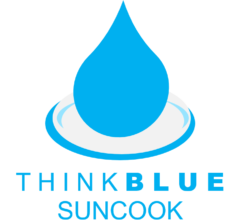When we talk about stormwater and its impact around us, there are a lot of terms we use. Below is a list of common terms associated with stormwater runoff.
Best Management Practices (BMPs): The most effective and practical ways to control non-point sources of pollution from stormwater/urban runoff.
Catch basins: (Storm Drains) Curbside openings that collect runoff and rainwater from streets and serves as an entry point to the storm drain system.
First flush: The first flush of a rain event is comprised of the initial surge of runoff. During this phase, water pollution is typically more concentrated when compared to the remainder of the storm. Accordingly, this concentration of urban runoff results in higher levels of pollutants transported to the storm drain system. Capturing the first flush of an event often provides the majority of treatment needed to meet water quality standards.
Flood control channel: The open portion (often concrete-lined) of the storm drain system.
Gutter: The edge of a street (below the curb) designed to drain water runoff from streets, driveways and parking lots into catch basins.
Household hazardous waste: Common everyday products that people use in and around their homes including paint, paint thinner, herbicides, and pesticides that, due to their chemical nature, can be hazardous if not properly disposed.
Illegal discharge: Any disposal into the storm drain system for which a person or business does not have a permit.
Illicit connection: Any connection to the storm drain system that is not permitted: or any legitimate connection that is used for illegal discharge.
Impaired waterbody: A waterbody (i.e. streams, lakes) with recurring monitored violations of a numeric or narrative water quality standard
Impervious Cover: Any type of surface that does not absorb rainfall. i.e. rooftops, driveways, sidewalks, roadways, parking lots
Infiltration: Stormwater is allowed to soak into and move through the soil. The soil absorbs and temporarily stores the water for slow release to groundwater sources, helping to reduce local flooding. Also, as stormwater infiltrates, the soil acts as a cleanser. For example, pollutants may “stick” to the soil or be broken down by helpful bacteria or other processes.
MS4: Municipal Separate Storm System is a system of conveyances that is designed to collect/convey stormwater and is owned by a state, city, town, village or other public entity that discharges to water of the United States.
Non-point source pollution: Pollution that does not come from a single, identifiable source. Includes materials that wash from roofs, streets, yards, driveways, sidewalks and other land areas. Collectively, this is the largest source of stormwater pollution.
NPDES: The federal National Pollutant Discharge Elimination System (NPDES) stormwater permitting program developed by the U.S. Environmental Protection Agency (EPA).
Outfall: A flow of water from one drainage system into a larger system, or into a body of water such as a stream, river, pond or lake.
Pervious Cover: Any type of surface that allows rainfall to be absorbed i.e. grass, gardens
Point source pollution: Pollution from a single identifiable source such as a factory or a sewage-treatment plant. Most of this pollution is highly regulated at the state and local levels.
Pollution prevention: The NPDES Permit defines this as including planning, schedules of activities, prohibition of practices, implementation of maintenance procedures and other management practices to prevent or reduce pollutants in stormwater/urban runoff discharges.
Source Control: Action to prevent pollution where it originates.
Storm drain system: A vast network of underground pipes, open channels, treatment systems and outfalls designed to manage stormwater runoff.
Stormwater: Stormwater runoff is caused by precipitation from rain and snowmelt events which flow over land or impervious surfaces and is unable to infiltrate into the ground. In natural systems, precipitation may be directly infiltrated subsurface, stored in natural depressions, and reintroduced to the atmosphere through evapotranspiration. Development alters this native state and replaces it with impervious cover including heavily landscaped areas (such as lawns and playgrounds), roads, sidewalks, paved driveways and roofs.
Stormwater pollution: Untreated runoff which transports pollutants (cigarette butts, trash, automotive fluids, used oil, paint, fertilizers and pesticides, lawn and garden clippings and pet waste) from impervious surfaces such as streets, parking lots, driveways and yards and carries them through the storm drain system.
TMDL: Total Maximum Daily Load places a cap on the maximum amount of a specific pollutant that is allowed to enter a water body that will allow the body of water to still meet water quality standards.
Watershed: A watershed is a geographical area in which all water drains to a given stream, lake, wetland, estuary, or ocean. It is similar to a funnel. Our landscape is made up of many interconnected watersheds. The boundary of a watershed is defined by the line that connects the highest elevations around the waterbody.
